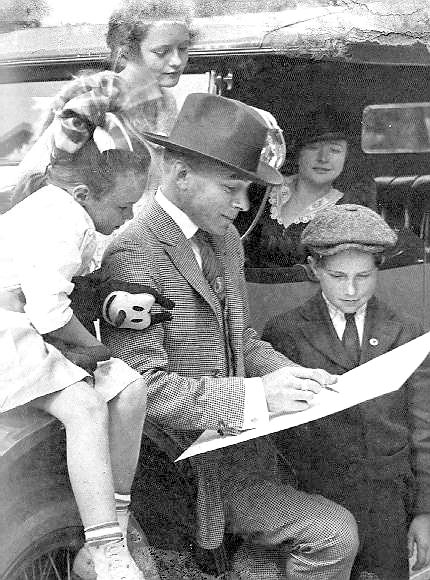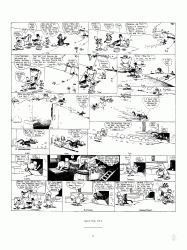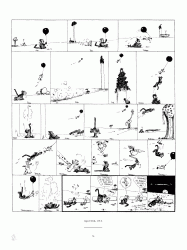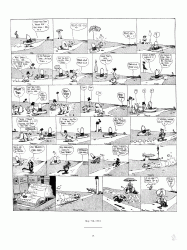
Black History Month 2011: George Herriman
February 1st, 2011 by david brothers | Tags: bhm11, george herriman



George Herriman
Selected Works: Krazy & Ignatz 1916-1918: “Love in a Kestle or Love in a Hut”
Last year, I discovered All-Negro Comics and was stunned to find that there were comics created by and for black people in the ’40s. This past year, I finally started paying attention to George Herriman, and my mind was blown once again. Herriman’s Krazy Kat was #1 on The Comics Journal‘s list of 20th century American comics and is widely loved by what seems to be everyone ever. The Ignatz Awards at Small Press Expo are named after the mouse from Krazy Kat. If you take a look at the history of comics, there’s a black guy right there in the early days. That’s wild, and it somehow never really settled in my mind. I didn’t just hear about Herriman, but somehow, the fact that he was black never managed to settle in my head.
Krazy Kat, though. I burned through 1916-1918, and for strips that are pushing 100 years old, they’ve aged fantastically well. I wasn’t expecting to see Herriman playing with panel layouts or having non-clunky dialogue with clever wordplay. The language is really what hooked me, even with how much I like how Herriman experiments with layouts and formula. Krazy mumbles and rambles, building a complex world of words that sit just to the left of ours. Herriman throws “quotes” around seemingly random terms, just like Kirby did. There’s even a bit of Brian Azzarello-esque wordplay at work in certain strips, like the vagrant William Bee, alias “Bum Bill.”
I’ve been losing faith in the mainstream’s ability to appeal directly to black readers, but Herriman serves as a reminder that there has almost always been an alternative. When something isn’t floating your boat, it’s time to find another something.

I was unaware of the story of George Herriman. It seems that he chose to pass for white (like many others), rather than openly declare his true ancestry. I can’t help but wonder if even William Hearst was aware that Mr. Herriman was a black man. Nonetheless, George Herriman was apparently an exceptionally talented person. Interesting article.
I’m only aware of Krazy Kat because Bill Watterson always mentioned it as one of his primary influences in the annotated Calvin and Hobbes. I wasn’t aware that he was black, and I’d never really checked out the comic. That’s a pretty neat story, and a pretty neat comic.
Well damn, I never really thought about it either. Herriman’s the man.
No joke: Herriman is one of the best pure writers in American comics history, never really on a ‘plotting’ level — he just wasn’t concerned with that, even when Krazy Kat would continue a sequence from day to day — but simply in terms of marshaling language. Then again, I’ve always felt Krazy Kat is closer to poetry than prose…
@Jog: Comics poetry–that’s perfect. I’m going to loop back around to Herriman down the line (I’ve got several volumes of Fanta’s reprints now), but I’m consistently amazed at how many of his strips are just a little bit of nothing but monstrously entertaining. There’s one in the middle of 1917 that’s got a sublime nose/knows series of rhymes. I love the strip abut the echo especially, and Gooseberry Sprig is such a great little guy. He has so much fun being a Duke Duck.
Herriman was and is a national treasure, one of the greatest cartoonists of all time.
Comics, and for that matter the English language, are all the richer for what Herriman did.
Thanks for reminding me about Krazy Kat, David.